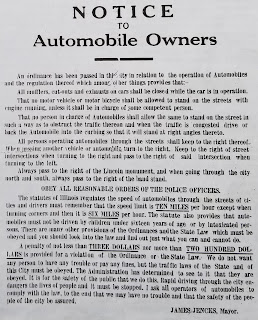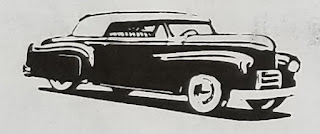Read our previous blog posting of the Lincoln Monument at: https://bunkerhillhistory.blogspot.com/2015/01/lincolns-statue.html
You can also view our other Historical Lincoln Statue photos at: https://drive.google.com/drive/folders/1L65sbUvrwDx-JhBu3qz-bRAg9O3JvBLZ
From Carolyn Scroggins' Stories from the Past article
DONATED BY CAPTAIN CHARLES CLINTON
COMPANY B, 1ST MISSOURI CALVARY, VOLUNTEERS
BUNKER HILL MEN SERVED IN THIS CIVIL WAR UNIT
The statue in Bunker Hill and the one in Cincinnati are the only ones which Clinton donated and the only ones with the figure of a woman kneeling. Capt. Clinton donated the one to Bunker Hill in honor of the men (some from Woodburn) who served with him in Company B of the First Missouri Cavalry, Volunteers. An article later referred to says that Bunker Hill was a close second to Carlinville in the county in sending recruits to the Union army, according to records.
The first replica of the Hastings mold was erected in 1904 in Bunker Hill. The citizens of Bunker Hill were asked by Capt. Clinton to supply the base on which his statue would be placed. I read the amount to be raised and it seems that it was around $350. An article from the Illinois State Journal, Springfield, in July 1948 said: "A massive statue of Abraham Lincoln overlooks main street in Bunker Hill." The bronze statue, 7 1/2 feet high weighed 22 tons and was valued at $5,000.
It has been reported many times that our statue is one of four made from the mold created by William Granville Hastings. He was an English artist who died in 1902 at age 34 before any of his statues were mounted. This specific Hastings mold commemorated Lincoln's second inaugural address, with a woman kneeling in front of the inscription, "With Malice Toward None."
The Springfield article continued by saying the Lincoln statue was toppled to the ground in the devastating tornado of March 1948 and his head was severed from the body. In a reasonable amount of time, considering the devastation in the town, the statue was put together again. It underwent a restoration in the '80's and another one including repair in the '90's. (NOTE: you can view our restoration photos at: https://drive.google.com/drive/folders/174tj1H53MYnpiJpNcqTvvzjIBCcQsAN8)
The first Hastings statue was presented to the city of Cincinnati, OH by Captain Clinton in 1902 and stands on the South Avondale Elementary School grounds at the corner of Reading Rd. and Rockdale Ave.
The second replica or the third statue cast from the Hastings mold has stood in Jefferson, IA since 1918. It is on a large base in front of the Green County Court House. The concluding sentence of Lincoln's second inaugural address in inscribed on the base. Glenn and I visited friends in Jefferson in 1989 and took a picture of the statue. I have several legal size pages of the story about how the statue was donated to Jefferson, but I can't find it at this time. I don't remember there was a couple in the area who couldn't have children but wished to use money which would have raised a couple of children and sent them to college on a worthy project for the town. the Lincoln Statue was their gift.
From Bunker Hill Revisited by Carl Stanton, Volume Four - 1901-1910
February 26, 1904
W.W. Hayes, who has interested himself in the gift of Charles Clinton, of Cincinnati, of a Lincoln Monument to the City of Bunker Hill, will present the matter before the next meeting of the city council, and ask them to accept the same, and also allow the erection of the statue in the center of Washington and Fayette Streets. This place has been suggested for several meetings.
About the base of the monument, there will be a concrete surface, laid in a circle, the whole to be guarded by an iron railing.
The gift of Mr. Clinton's is most generous and is inspired by the fact that during the Civil War, he enlisted a company of Calvary from this part of the state.
J.G. Rumbolz, Sergeant John Brandenburger, Augus Kardel, and Lieutenant E.S. Williams (now of the Soldier's Home at Quincy) residents of Bunker Hill, were members of Capt. Clinton's Regiment.
It is hoped the monument will be ready for unveiling May 30, but Mr. Hayes, who is a marble and granite worker, thinks it is impossible to rush the job to completion by that time. Nevertheless, the day of unveiling will be made one of considerable ceremony, and it will to much to the patriotism of all and revere the memory of our own Lincoln.
September 9, 1904
The Lincoln Monument has been formally accepted by the City of Bunker Hill and for ages to come, the magnificent gift of Capt. Clinton will stand as a testimonial to the greatest man America ever produced - a martyr to his country.
Miss Mary True, who with her mother, are intimate acquaintances and friends of Capt. Clinton, pulled a cord, which hung on the platform and withdrew a large American flag from the bronze statue of Lincoln, revealing for the first time to the great assembly, a full view of the entire structure-pedestal and statue. At the same moment, those on the platform arose with Prof. Stiver, the band struck up an appropriate national air, and the entire throng broke forth in a shout of applause.
...Read more about this and other Bunker Hill, IL historical stories at https://bunkerhillhistory.org/












































